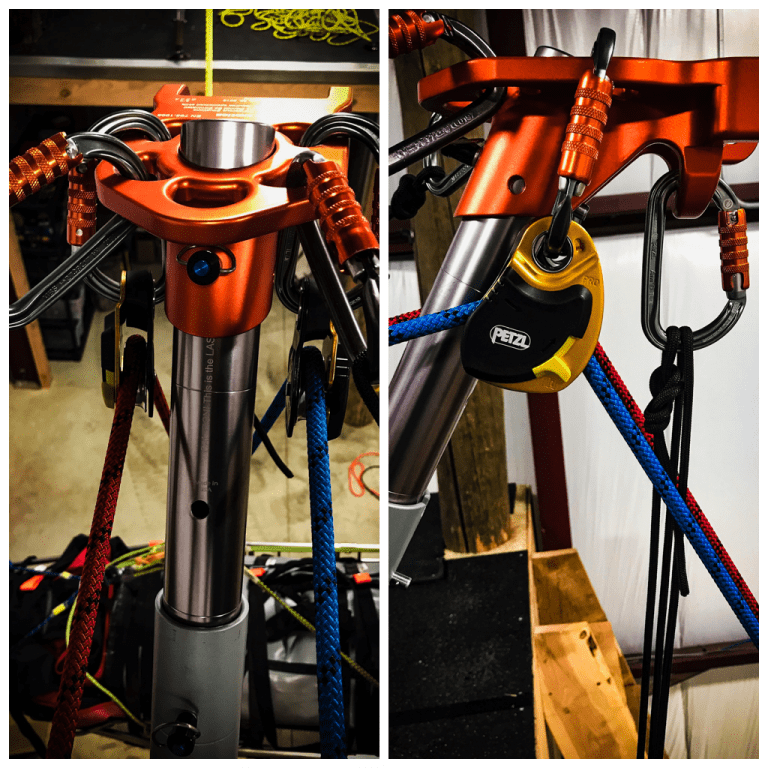In technical rope rescue, the Two-Tensioned Rope System (TTRS), also known as the Twin Tension Rope System, has become a cornerstone for efficient and safe operations. This system employs two independently tensioned ropes, each capable of bearing the full load, thereby providing redundancy and balanced load distribution.
Key Components of TTRS:
- Dual Main Lines: Both ropes are actively tensioned and share the load equally, enhancing system reliability.
- Self-Braking Devices: Incorporating devices like the Petzl I’D or CMC MPD allows for controlled movement and immediate stopping if necessary.
- Mechanical Advantage Systems: Utilizing setups such as the Petzl Jag System facilitates efficient raising and lowering of loads.
Advantages of TTRS:
- Enhanced Safety: The redundancy ensures that if one line fails, the other can support the load, minimizing risk.
- Operational Efficiency: Balanced load distribution reduces strain on individual components and allows for smoother operations.
- Simplified Training: Standardizing equipment and procedures across both lines streamlines training and deployment.
Implementation Considerations:
- Equipment Compatibility: Ensure all devices are compatible with the rope diameter and are rated appropriately for the loads encountered.
- Team Coordination: Effective communication among team members is crucial to maintain equal tension and coordinate movements.
- Regular Drills: Conducting routine training exercises helps teams stay proficient in TTRS techniques and protocols.
For a comprehensive exploration of TTRS, including its applications and benefits, refer to Two Tensioned Rope Rescue Systems.
By integrating TTRS into rescue operations, teams can achieve higher safety standards and operational effectiveness, ensuring successful outcomes in complex rescue scenarios.
Peace on your Days...
Lance










2 thoughts on “Two Tension Rope Systems”
773695 705647But a smiling visitor here to share the adore (:, btw fantastic pattern . 405116
199665 219334After study several of the weblog articles for your website now, and that i truly like your method of blogging. I bookmarked it to my bookmark site list and are checking back soon. Pls consider my internet web site too and inform me what you consider. 36332
Comments are closed.